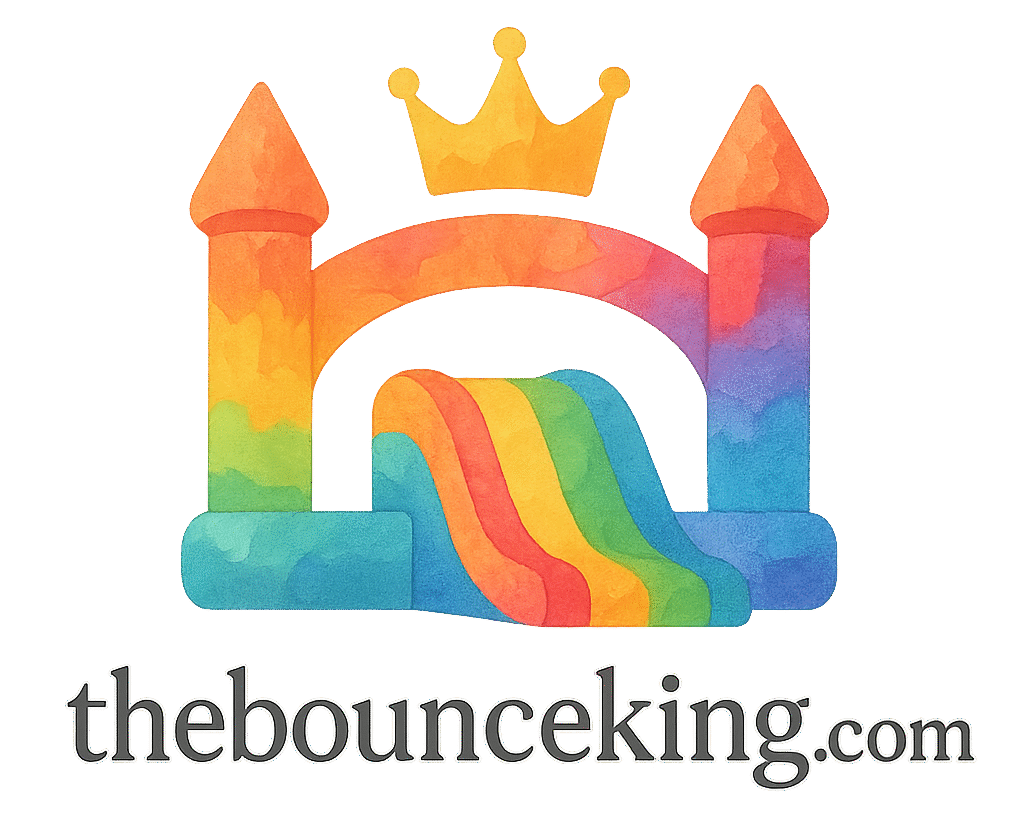Introduction
Hosting a bounce party is an exciting and fun way to bring people together, especially for kids. However, the excitement of jumping and playing comes with the responsibility of ensuring the safety of your guests. Bounce houses, while generally safe, can lead to minor injuries. As a bounce party host, being prepared for emergencies is essential. This guide will walk you through 7 first aid tips every bounce party host should know, to help you manage situations calmly and effectively. By following these steps, you can ensure that everyone has a safe and enjoyable experience. Let’s dive in!
Why First Aid Knowledge is Crucial for Bounce Party Hosts
As a bounce party host, you want everyone to have fun, but safety is the top priority. Bounce houses and inflatable rentals come with risks like any other activity. Understanding basic first aid can help you manage injuries and prevent small issues from turning into major problems. By being proactive, you can ensure that both kids and parents feel at ease during the event. It’s not just about playing and having fun, it’s about keeping your guests safe.
Understanding the Risks of Bounce Houses
While bounce houses provide hours of fun, they also carry certain risks. Common accidents include falls, collisions, and minor scrapes. It’s important to understand what could go wrong so you can anticipate and prevent these risks. Whether you’re hosting a small gathering or a big event, knowing how to handle these situations will keep your event safe and stress-free.
Common Injuries at Bounce Parties
Injuries at bounce parties range from minor cuts and bruises to more serious incidents like fractures or concussions. While these incidents are rare, accidents can happen. It’s important to be prepared for the unexpected and ensure that you know the right actions to take in an emergency. For more information on maintaining safety at bounce events, check out these bounce safety tips.
Tip #1: Always Have a First Aid Kit on Hand
A first aid kit is an absolute must when hosting any kind of event, especially one involving active play. It’s important to have everything you might need for quick, efficient treatment of minor injuries. Having a first aid kit on hand allows you to respond to injuries immediately, ensuring that your guests are safe and well cared for.
What Should Be in Your First Aid Kit?
Before your event begins, make sure your first aid kit is fully stocked and ready for action. You don’t want to waste time looking for supplies when an injury occurs.
Essential Items Every Bounce Party First Aid Kit Needs
Your kit should include:
- Adhesive bandages (various sizes)
- Sterile gauze pads and bandages
- Antiseptic wipes and ointments
- Tweezers (for splinters or debris removal)
- Instant cold packs
- Scissors
- Medical tape
- Pain relievers (aspirin, ibuprofen)
- Alcohol pads
- Gloves for hygiene
For a list of additional supplies, check out our inflatable bounce rentals page for guidance on what to bring along to your bounce event.
Tip #2: Know Basic CPR Techniques
Knowing CPR (Cardiopulmonary Resuscitation) is a crucial life-saving skill. While it’s rare that a child will need CPR at a bounce party, having the knowledge to act quickly could make a difference in a critical situation. As a bounce party host, you should know how to perform CPR on children in case of an emergency.
When to Use CPR at a Bounce Party
If a child loses consciousness or is having difficulty breathing, CPR might be required. Being trained in CPR allows you to step in with confidence, reducing the risk of serious harm. Consider taking a CPR course before hosting large gatherings. You can find local classes or online certifications to help you be prepared.
Tip #3: Preventing and Managing Cuts and Scrapes
Bounce houses are filled with enthusiastic kids who may accidentally bump into each other or fall. Cuts and scrapes are common injuries, but they are easy to manage if you know what to do. Keeping these injuries under control can prevent further complications.
Handling Minor Injuries with Care
If a child gets a minor cut or scrape, it’s essential to clean the wound immediately and cover it with a bandage to prevent infection. Ensuring that your bounce house area is free of debris can also reduce the risk of cuts and scrapes.
How to Clean and Bandage a Cut or Scrape
- Clean the wound: Use antiseptic wipes or water to rinse the wound.
- Apply pressure: If there’s bleeding, use a clean cloth or sterile gauze to apply pressure.
- Cover with a bandage: Once bleeding stops, apply an adhesive bandage or sterile gauze pad to the wound.
If you’re looking for more detailed safety tips, be sure to check out our bounce safety tips.
Tip #4: Monitoring for Signs of Heat Exhaustion
Bounce parties, especially during warm weather, can lead to heat exhaustion. Kids who are running and jumping for hours in a bounce house may become overheated and dehydrated. Monitoring for heat exhaustion is crucial to prevent it from progressing to something more serious.
Recognizing Heat Exhaustion Symptoms
Heat exhaustion can show up with symptoms like excessive sweating, dizziness, nausea, and fatigue. If you notice any of these signs, it’s important to take action right away.
How to Treat Heat Exhaustion at a Bounce Party
- Move the child to a cooler area.
- Offer them water or an electrolyte drink.
- Have them rest in a shaded area and cool down by using a cold compress or towel.
Promote hydration throughout the event by offering water breaks frequently, especially in warmer conditions. If you need more information about keeping kids safe during events, explore our indoor bounce fun page.

Tip #5: Keep Hydrated and Promote Hydration
Keeping everyone hydrated during the party is essential, especially in high-energy activities like bouncing. Dehydration can quickly lead to heat exhaustion and other health issues, so make sure to encourage guests to drink water regularly.
The Importance of Water for Bounce Party Guests
Set up water stations throughout your bounce party area to ensure that everyone can stay hydrated. Remind the kids to take frequent breaks and drink plenty of water. Hydration not only helps prevent heat exhaustion but also ensures that everyone has the energy to enjoy the party to the fullest.
Tip #6: Monitor for Signs of a Concussion
Falls are an inevitable part of any bounce party, and while most will result in nothing more than a few scrapes, there’s a risk of more serious injuries like concussions. It’s important to monitor kids for any signs of a head injury and know when to seek medical help.
Recognizing Concussion Symptoms
If a child has fallen and is showing signs such as dizziness, headache, nausea, or confusion, they may have suffered a concussion. You should take these symptoms seriously, even if they seem mild.
Steps to Take if a Concussion Is Suspected
- Immediately remove the child from the bounce house.
- Keep them in a quiet, dark area to rest.
- Seek medical attention right away to ensure that the concussion is properly evaluated.
For additional safety tips on managing health risks during your event, you can check out our page on seasonal bounce events for seasonal safety advice.
Tip #7: Have Emergency Contact Information Ready
In the event of a medical emergency, it’s important to have emergency contact information readily available. This ensures that you can reach parents or guardians quickly if something goes wrong.
Why Having a Contact List Is Crucial
Make sure to gather emergency contact information from all parents or guardians before the party begins. This list should include phone numbers, medical conditions, and any allergies the children may have.
How to Stay Calm During an Emergency
Stay calm, and if necessary, call 911 immediately. Your ability to remain calm in a crisis will help ensure that the child receives proper care.
Conclusion
First aid knowledge is critical for any bounce party host. By following these 7 tips, you’ll be prepared to handle emergencies, ensuring a safe and fun time for all. Remember, safety is just as important as fun. Being prepared can help you manage any situation with confidence and ease, and keep your event running smoothly.
Frequently Asked Questions (FAQs)
- What should I do if a child falls from a high bounce house platform?
- Check for any visible injuries and monitor for signs of a concussion. If there are concerns, seek medical attention immediately.
- How can I prevent injuries at a bounce party?
- Ensure the bounce house is properly inflated and supervised, and make sure children follow safety rules. Learn more about bounce safety.
- What should be in a bounce party first aid kit?
- A first aid kit should include bandages, gauze, antiseptic wipes, cold packs, and basic pain relievers. For more info, visit our bounce rental page.
- When should I call for professional medical help?
- If a child is unconscious, not breathing, or exhibits signs of a serious injury like a concussion, call emergency services.
- How can I recognize heat exhaustion in kids?
- Look for signs such as dizziness, excessive sweating, nausea, and pale skin. You can learn more about hydration and safety on our indoor bounce fun page.
- Can I treat a concussion at home?
- No. If a concussion is suspected, the child should be evaluated by a medical professional immediately.
- What should I do if a child gets a small cut or scrape at a bounce party?
- Clean the wound with antiseptic wipes, apply pressure to stop bleeding, and cover it with a bandage. Visit our bounce safety tips page for more guidance.

